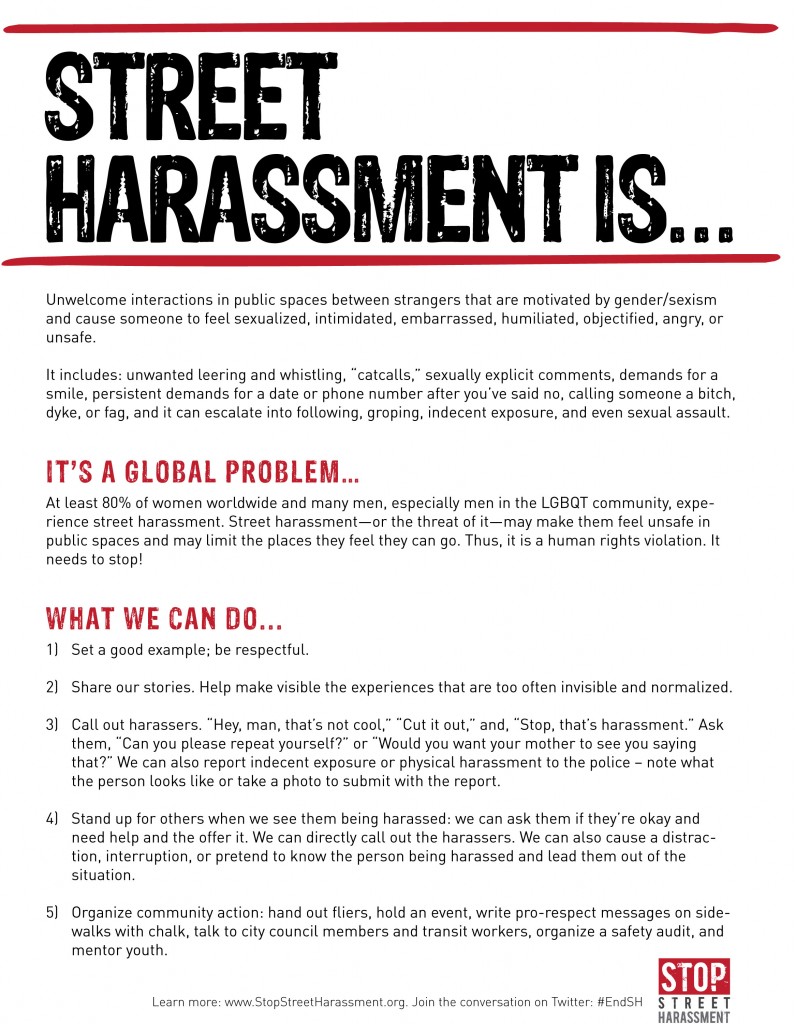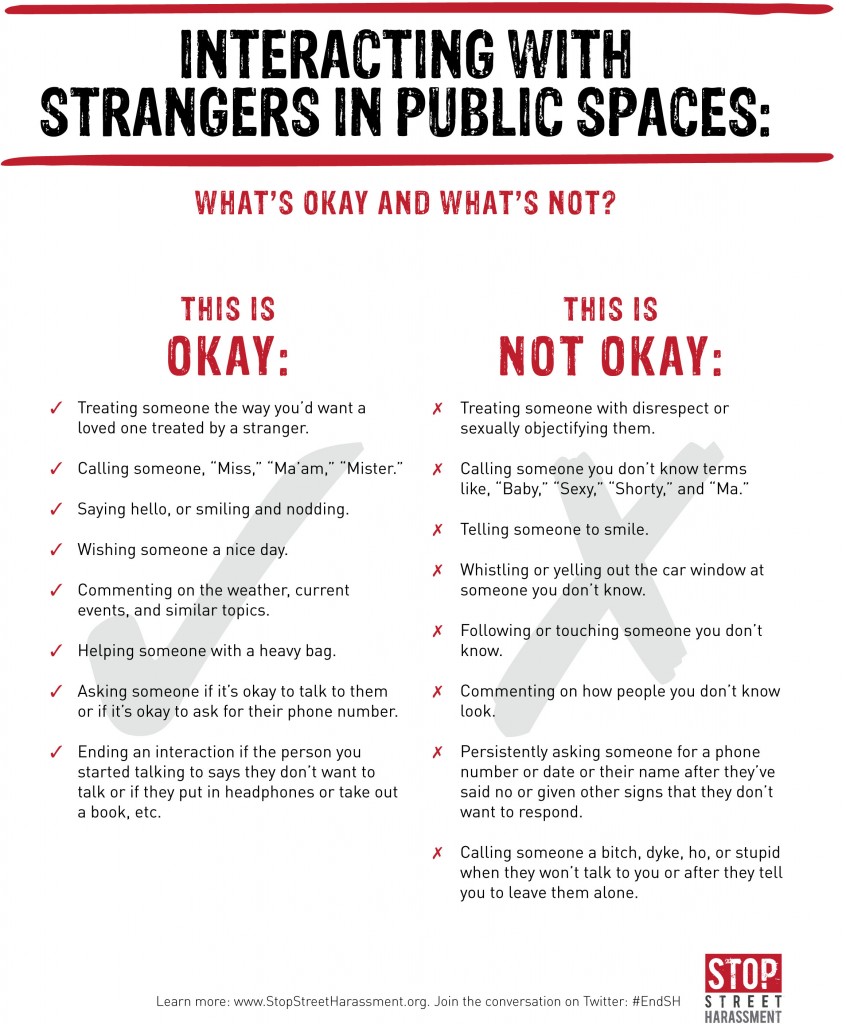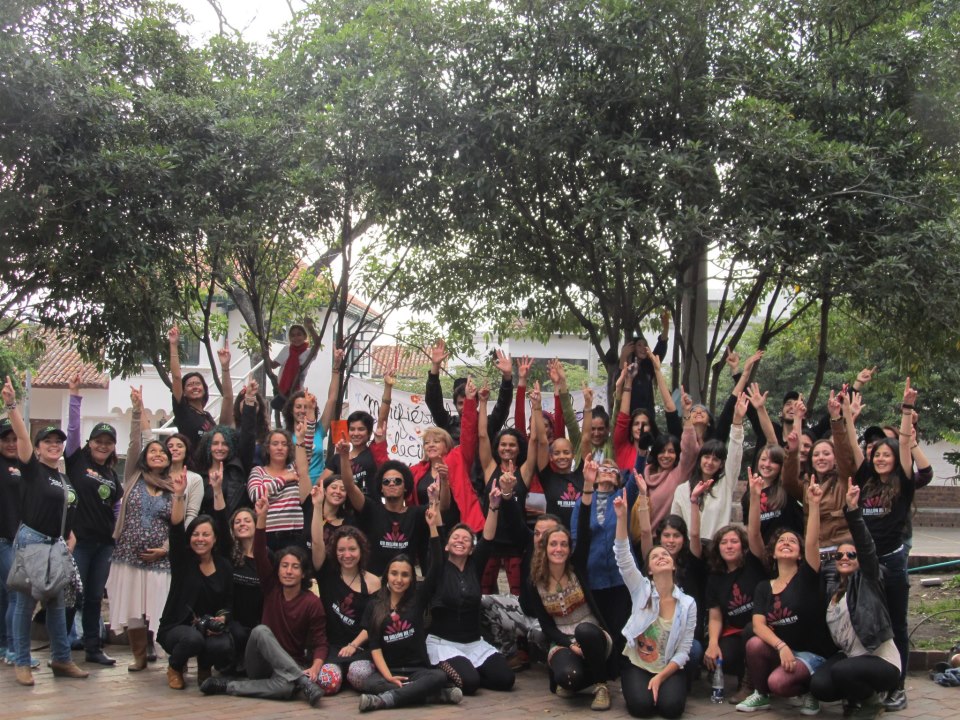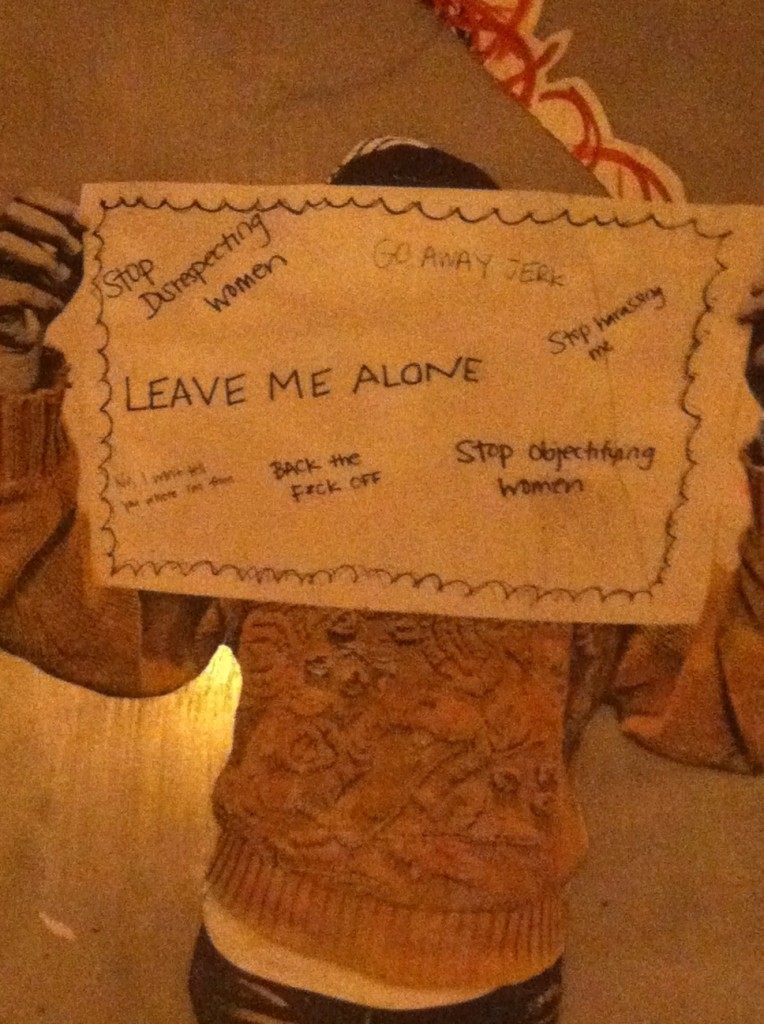 By Sean Crosbie, SSH Correspondent
By Sean Crosbie, SSH Correspondent
Last week, I attended an event called “Speak Out with Street Art” that was held at the offices of the Women’s Information Network in Washington, D.C. This event was a collaboration among Collective Action for Safe Spaces (CASS), the Women’s Information Network (WIN), and Women, Action, and the Media (WAM!), as part of “WAM! It Yourself 2013,” a series of events being held in cities around the U.S. and Canada. These gatherings bring together local activists and others who are interested in advancing social justice and women’s representation in the media.
The purpose of “Speak Out with Street Art” was twofold: to explain CASS’s role in using “artivism” to empower Washingtonians to stand up to sexual harassment and assault, and to work with Graham, a D.C.-based artist, whose anti-harassment art is found around the city.
 The evening started with an introduction by CASS’s Director of Community Outreach and Events, Zosia Sztykowski, who applauded the efforts of local community organizations to bring attention to the issues of violence and harassment through art. In addition to local efforts, Zosia showed the audience anti-harassment art from around the world, including one from the Egyptian Revolution showing Nefertiti in a gas mask.
The evening started with an introduction by CASS’s Director of Community Outreach and Events, Zosia Sztykowski, who applauded the efforts of local community organizations to bring attention to the issues of violence and harassment through art. In addition to local efforts, Zosia showed the audience anti-harassment art from around the world, including one from the Egyptian Revolution showing Nefertiti in a gas mask.
Following this broad overview, Zosia turned the focus to Graham, a local artist who works in collaboration with CASS through the D.C. Artist Collective. A D.C.-area native, he has worked with numerous clients to create art that advances social causes. Graham explained how one of the main functions of street art is to reclaim public space for the people, and not allow public areas to be auctioned off to the highest bidder (i.e. hotels, billboards, etc.). This philosophy has informed Graham’s work to a remarkable degree.
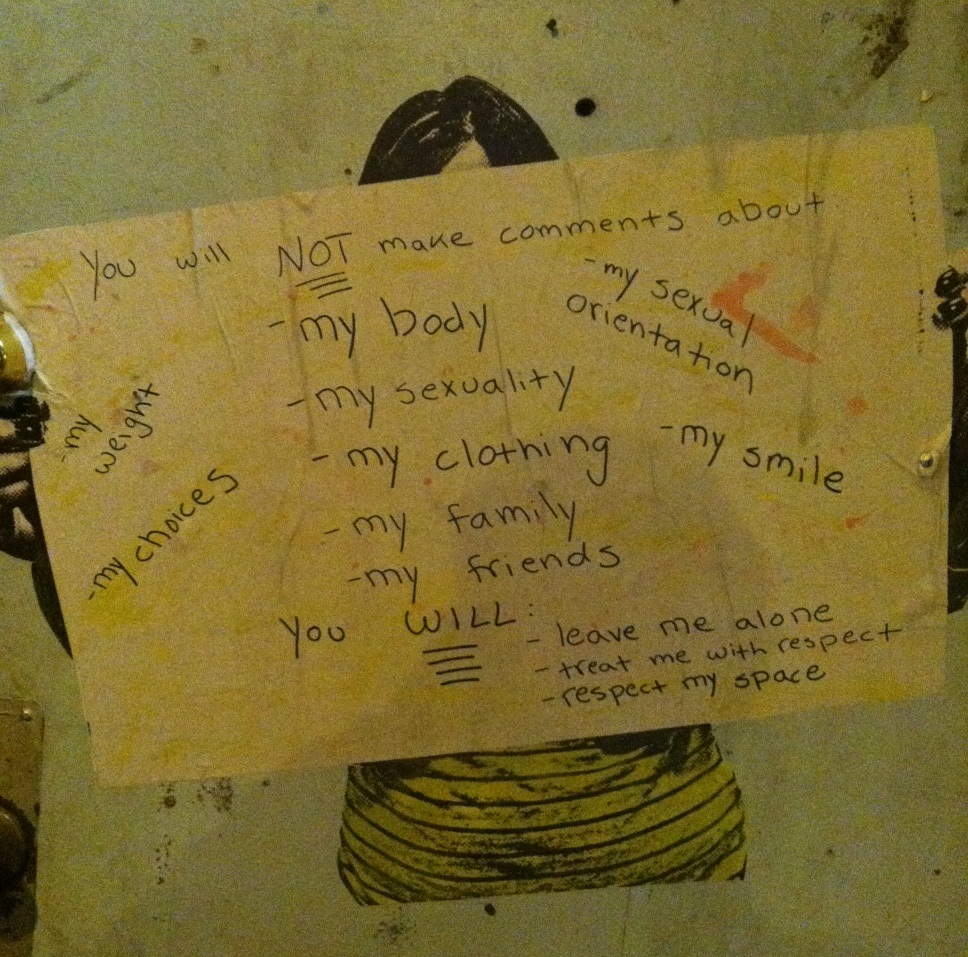 His work had an effect on me – the artwork definitely caught my attention when I saw it on the streets. I was instantly engaged and intrigued when I saw two of Graham’s artworks on the street in D.C., and I contacted Holly inquiring about the artist, and she let me know about this event.
His work had an effect on me – the artwork definitely caught my attention when I saw it on the streets. I was instantly engaged and intrigued when I saw two of Graham’s artworks on the street in D.C., and I contacted Holly inquiring about the artist, and she let me know about this event.
After the presentation, the audience dispersed and separated into two groups: one group joined Graham in wheatpasting a local D.C. neighborhood, and another joined Zosia at the office for a creative storytelling workshop, in which people shared their experiences about harassment. This was a great way to get people involved in “artivism,” and also to share their experiences in a supportive, open environment.
Street art is a great way to create an in-your-face message to combat street harassment and assault. Since both occur in public spaces, it is only fitting that the art be located in the same space, preferably on or near a site of harassment. This sends a message to the harassers that acts of disrespect and violence against women will not be tolerated—local activists will speak out! The work of CASS and Graham are just some of the many efforts by local activists to send this message and to make a difference. Stop Street Harassment appreciates these conversations taking place and hopes for more in the future.
Sean has written for Stop Street Harassment since April 2011. He is a library/research assistant at a labor union in Washington, D.C. and holds a Bachelor’s degree in economics from American University.
[Editor’s note, I attended the workshop too, here are my photos.]

